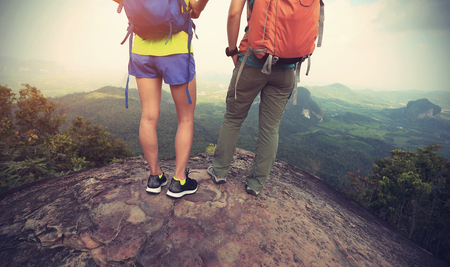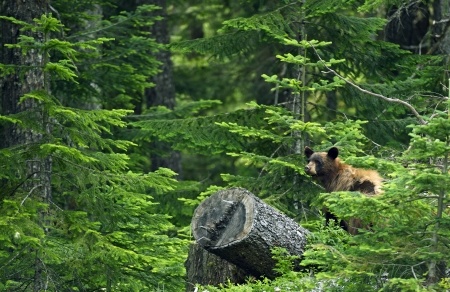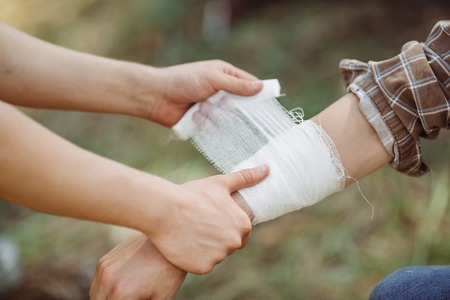 If there’s anything to know about CPR it’s that lives can be saved when you know what you’re doing – even if a 9-1-1 call isn’t available. According to the American Heart Association, CPR saves roughly 92,000 lives each year – that’s an average of 252 lives every single day. Of those 92,000 incidents, 22% occur away from the home. The more remote the location, the more difficult it is to benefit from a quick EMT response time.
If there’s anything to know about CPR it’s that lives can be saved when you know what you’re doing – even if a 9-1-1 call isn’t available. According to the American Heart Association, CPR saves roughly 92,000 lives each year – that’s an average of 252 lives every single day. Of those 92,000 incidents, 22% occur away from the home. The more remote the location, the more difficult it is to benefit from a quick EMT response time.
This is why it’s so important for those who enjoy the great outdoors to learn CPR. While cellular towers seem to be everywhere these days, you have only to be on the “wrong side of the ridge line” to lose reception – and a chance to call 9-1-1. Learning Wilderness CPR can make all the difference, keeping a priceless heart beating while someone else goes for help.
CPR Saves Lives in the Great Outdoors
Take a look at these headlines, all of which have been published in the last calendar year:
- Snowboarder Dies Twice – Saved by Ski Patrol
- Off-Duty Rescue Worker Saves 3-Year Old’s Life [at campground pool]
- Well-Trained Trio Saves Heart Attack Victim on Trail
- Man Suffers Cardiac Arrest on Vail Ski Trip: Lives to Thank Medical Staff One-Year Later
In each of these scenarios, help was further away than normal. Without the quick and trained response of bystanders, the victims might not have lived to thank their heroes. Taking a single CPR certification course can significantly increase the chances of survival for anyone who experiences a cardiac arrest in your presence.
Keep in mind the the first few minutes after a heart stops beating are critical. Adult brain function can be compromised after just four minutes of circulation loss. After six minutes, brain damage is probable, and brain death is the most likely outcome by the 10-minute mark. By implementing CPR immediately, and effectively, you significantly decrease these risks by keeping the victim’s circulation intact and their blood oxygenated.
Applying an AED Further Increases a Victim’s Chances of Survival
Automated External Defibrillators (AEDs) are lightweight, portable units that use an electrical current to shock the heart back to life by restoring the heart’s natural rhythm. AEDs are extremely easy to use and can increase a cardiac arrest victim’s chances of survival by 50%, compared with the up to 20% survival rates associated with CPR-only resuscitation.
AEDs are designed for use by non-medical personnel, making them an ideal addition for camp offices, cabins, the backpack of group trail leaders or even the backpacks of lay people who venture into the outdoors on a regular basis.
Get Certified in Wilderness CPR if You Spend Time in Mother Nature
 If you and your family enjoy spending time outdoors, consider getting certified in CPR, and look for classes that specialize in Wilderness CPR, which will focus on scenarios that are more likely to take place while on a remote adventure. Wilderness-specific courses will address techniques for performing long-term CPR, which may be required if your location makes it more difficult for EMTs to respond right away.
If you and your family enjoy spending time outdoors, consider getting certified in CPR, and look for classes that specialize in Wilderness CPR, which will focus on scenarios that are more likely to take place while on a remote adventure. Wilderness-specific courses will address techniques for performing long-term CPR, which may be required if your location makes it more difficult for EMTs to respond right away.
In most cases, a basic CPR course will require less than a day’s worth of your time, but the skills you learn will stay with you for the rest of your life – and may be required to save the life of another.
Here are some of the questions we’re asked on a regular basis by prospective and enrolled CPR students:
Is it really possible to save someone’s life if emergency rescue personnel aren’t nearby?
Absolutely. As we mentioned above, the brain begins to shut down as a result of oxygen loss, resulting from the stopped heart. When performed correctly, with the right amount of pressure and the correct tempo, CPR keeps the heart pumping. Intermittent breaths introduce fresh oxygen to the lungs, which keeps the blood oxygenated. This cyclical sequence can be repeated for minutes – and even for an hour or more – until emergency personnel can respond.
This is why all CPR classes advocate continuing CPR until the EMTs or other medical responders arrive on the scene – no matter how long it takes. If you have an AED unit accessible, the victim has an even better chance of surviving and with his or her brain function intact.
Should we really invest in an AED for hiking or camping trips?
![]() You can purchase a high-quality, portable AED online for about $1200. This seems like a small price to pay for a piece of equipment that can fit in a backpack, or the trunk of your car, in a piece of luggage, in your snow boarding bag, etc. – and increases your chances of saving a life. That’s especially true if the life in question is a spouse, child, family member or friend.
You can purchase a high-quality, portable AED online for about $1200. This seems like a small price to pay for a piece of equipment that can fit in a backpack, or the trunk of your car, in a piece of luggage, in your snow boarding bag, etc. – and increases your chances of saving a life. That’s especially true if the life in question is a spouse, child, family member or friend.
If you run any type of outdoor adventure, business, group camps, or even rent your mountain or lakeside cabin to the public, an AED is a must-have. In addition to potentially saving lives, it can help protect you in the event of an tragic incident that results in a lawsuit.
Do you plan to spend time in or around water?
The National Parks Services reminds us that drowning is the second leading cause of unintentional injury deaths for children 1-to 14-years of age nationwide, and drowning continues to be a leading cause of visitor fatalities within the National Parks Service.
Take extra precautions when swimming in NPS or other natural water sources such as lakes, rivers, streams and oceans. These body’s of water are unpredictable. In addition to knowing CPR, make sure water-safe individuals 16-years old and older take turns as designated “water watchers” in areas where no lifeguards are on duty. Also, wears U.S. Coastguard approved personal flotation devices when in or near water – especially on a boat or when in/near moving water.
What emergency equipment is needed if you are out in nature?
 Always have the right emergency equipment on hand when enjoying outdoor adventures. This includes your CPR certification card and pocket-reminders, as well as a Red Cross certified first-aid kit, preferably one that’s designated for wilderness or outdoor situations. An AED is always a bonus. Together, your skills and the right equipment ensure you’re ability to do all you can in the event of emergency until trained professionals are able to take over.
Always have the right emergency equipment on hand when enjoying outdoor adventures. This includes your CPR certification card and pocket-reminders, as well as a Red Cross certified first-aid kit, preferably one that’s designated for wilderness or outdoor situations. An AED is always a bonus. Together, your skills and the right equipment ensure you’re ability to do all you can in the event of emergency until trained professionals are able to take over.
Bring On-Site CPR Training Directly to Employees and Staff
It’s one thing to require employees, staff and/or volunteers to have CPR and AED training certification – it’s another to bring the course directly to them. Your company or outdoor establishment will save time, money (and make everyone much happier) when you take advantage of on-site CPR and AED training.
Certified instructors will bring all the equipment, coursework and testing materials to your place of business or classroom of choice, simplifying things for everyone. We can also offer key personnel training to become Certified CPR Instructors so you can continue the practice in-house and train new staff or volunteers immediately after they’re hired.
Contact the Response Institute to learn more about wilderness CPR or to schedule both remote or on-site CPR and emergency first aid training classes. We look forward to giving you the ability to save lives wherever your adventures may take you.
Sign up for a CPR Class Today!
